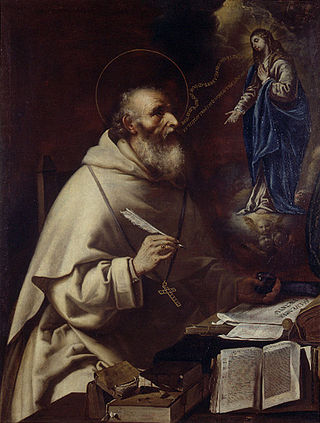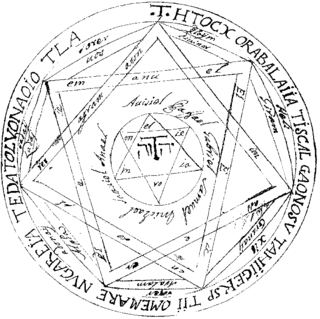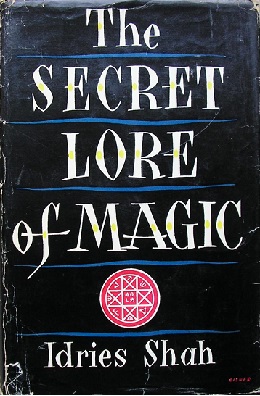 Cover page for Les admirables secrets d'Albert Le Grand | |
| Original title | 'Les Admirables Secrets d'Albert Le Grand' |
|---|---|
| Language | French |
| Subject | Magic |
| Genre | Grimoire |
| Publisher | Chez le Dispensateur des Secrets |
Publication date | 1703 |
| Publication place | France |
| Pages | 292 |
| OCLC | 423416316 |
| Followed by | Petit Albert & Dragon Rouge (also known as the Grand Grimoire) |
The Grand Albert is a grimoire that has often been attributed to Albertus Magnus. Begun perhaps around 1245, it received its definitive form in Latin around 1493, a French translation in 1500, and its most expansive and well-known French edition in 1703. Its original Latin title, Liber secretorum Alberti Magni de virtutibus herbarum, lapidum et animalium quorumdam, translates to English as "the book of secrets of Albert the Great on the virtues of herbs, stones and certain animals". It is also known under the names of The Secrets of Albert, Secreta Alberti, and Experimenta Alberti.
Contents
- Contents
- Epistle
- Book One
- Book Two
- Book Three
- Book Four
- Advice to the Reader / Thoughts of the Prince of the Philosophers
- Medieval editions
- Authorship
- See also
- References
- External links
Bibliographer Jacques-Charles Brunet described it as being "among popular books, the most famous and perhaps the most absurd.... It is only natural that the Book of Secrets was attributed to Albert the Great, because this doctor, very learned for his time, had, among his contemporaries, the reputation of being a sorcerer."
This book is often accompanied by another, similar text, the Petit Albert , which has been called its "little brother". [1] Its title is Alberti Parvi Lucii Libellus Mirabilibus Naturae Arcanis, or the "Book of the marvelous secrets of Little Albert". There are recipes taken from Gerolamo Cardano ( De subtilitate , 1552) and Giambattista Della Porta ( Magia Naturalis , 1598), and there is an original chapter on talismans.
The Grand Albert grimoire was not an isolated phenomenon, but rather part of a long tradition of occult literature that stretches back centuries. From the ancient Egyptian Book of the Dead to medieval grimoires like the Key of Solomon and the Lesser Key of Solomon, people have long been drawn to books like the Grand Albert for their promises of power and knowledge.
During the 19th century, this grimoire was widely circulated in France, where it was distributed on the streets in small paperback versions in the Bibliothèque bleue style. [2] This mass availability was one of the factors that contributed to the rise in popularity of the grimoire. While it was intended for those with an interest in magic and the occult, its contents and purported power often appealed to those who were desperate for solutions to their problems.
The book contained instructions on how to summon spirits, demons, and other supernatural beings, as well as spells and incantations for various purposes such as healing, protection, and love. It also recommended herbal remedies and potions for common ailments, such as the use of theriac, a concoction made of serpent’s flesh and opium, as a remedy for animal poisons. [3]
However, the use of folk cures and occult rituals, like the ones in Grand Albert, was much more common with peasants. Those who had access to mainstream medical care and education tended to avoid such practices, as they were often viewed as superstitious and ineffective and there was a stigma attached to reading grimoires like the Grand Albert.
The Grand Albert's popularity was also partly due to its reputation for granting spiritual powers to its readers. Some believed that simply reading the book could result in demonic possession, while others saw it as a means of gaining supernatural abilities. [4] However, such beliefs were not supported by mainstream religious authorities, who often viewed such practices as heretical and potentially dangerous.
Despite their reputation as sources of dangerous and forbidden knowledge, grimoires like Grand Albert have also played a role in the development of science and medicine. Many early scientists and physicians were also practitioners of magic and alchemy, and some believed that magic and science were two sides of the same coin.
There is still interest in the occult and esoteric practices, with many recent versions of Grand Albert and other ancient texts that modern audiences can read in search of hidden knowledge and spiritual enlightenment. This has led to a resurgence in the popularity of grimoires and other occult literature, with some modern practitioners adapting ancient rituals and spells to suit their own spiritual beliefs and practices.
Some scholars have attempted to trace the origins of the Grand Albert grimoire, but its true authorship remains unknown. Despite the controversy surrounding the Grand Albert grimoire and other similar books, they continue to fascinate and intrigue people to this day. The book's enduring popularity is a testament to the interest society has with the supernatural and the unknown.














